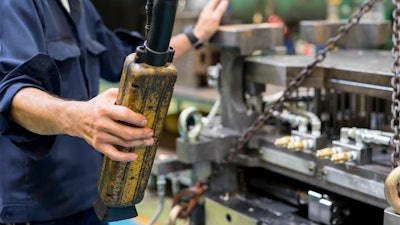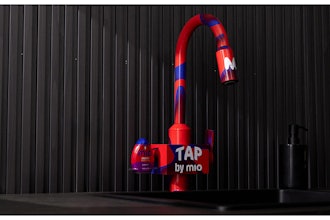
When it comes to die casting, controlling the process temperature is crucial. If the temperature of the dies is too hot, it can damage the mold. Too cold, and the temperature could drop too quickly and cause serious defects including greater porosity or misruns on the casting surface.
Used to draw heat from the die cavities, water is an integral part of the die-casting cycle. This is where cooling towers come into play ensuring that optimal water temperatures can enable the production of the highest-quality parts.
However, the reliance on old, outdated cooling technologies can put die-casting companies at risk of costly downtime or even flawed parts that may cause irreparable damage to a company’s reputation.
For years, the Ridco Casting Company in Pawtucket, RI struggled with its three metal-clad cooling towers which had to be operational 24 hours a day, seven days a week. The fourth-generation family-owned and operated zinc die casting manufacturer is known for producing some of the highest quality components in the industry.
“Metal cooling towers are maintenance intensive,” President of Ridco Casting Jeffrey Cohen said. “We spent a lot of time over the years repairing and replacing our old galvanized steel towers.”
 Improper temperature controls during the cooling process is a leading cause of defects for the die cast industry.Ridco Casting Company
Improper temperature controls during the cooling process is a leading cause of defects for the die cast industry.Ridco Casting Company
A cooling alternative
The performance of cooling towers constructed with metal-clad sheeting can be compromised by a significant number of factors. Among these are environmental circumstances, such as salt-air or the presence of ambient caustic gases from industry. Other corrosive damage can result from the harsh chemicals used to treat the water that passes through the cooling tower.
“We finally decided to end the cycle of replacing our metal towers with another metal tower,” Cohen said. “This time we decided to go with an HDPE cooling tower, and we’re happy we did.”
High-density polyethylene (HDPE) cooling towers are composed of engineered plastic that is impervious to the natural and chemical causes of rust and corrosion.
Developed by Delta Cooling Towers (deltacooling.com), such cooling towers are available today in a variety of designs and capacities from 10 to 2,500 cooling tons, with newer modular designs that can be connected for even greater capacities.
The HDPE cooling tower model Ridco Casting selected was a Paragon 200-ton model with enough cooling capacity to eliminate all three of the metal towers the company was utilizing.
This model includes one-piece casing, so there are no troublesome joints or seams. Areas that are often the source of leaks that require significant ongoing maintenance. Its HDPE construction ensures that the tower design can handle the toughest water-cooling jobs in any climate.
 Water, used to draw heat from the die cavities, is an integral part of the die-casting process.Ridco Casting Company
Water, used to draw heat from the die cavities, is an integral part of the die-casting process.Ridco Casting Company
Savings beyond durability
HDPE cooling towers offer additional cost saving benefits as well. For example, Ridco experienced a substantial savings when its new unit was installed. A typical cooling tower installation project can take several weeks or more.
However, the engineered plastic designs are factory assembled, enabling an installation process that can often be completed in a single day with a smaller crew.
Cohen estimates that his new cooling tower has greatly reduced expenses on costly water treatment chemicals as well as requiring far less maintenance and having essentially eliminated downtime related to its cooling water.
Cohen is also impressed with the savings he is seeing on his cooling tower’s fan drive system. His old metal towers came with a belt-drive fan system that required periodic belt replacement in order to prevent further downtime.
The Delta direct drive fan further eliminates the need for this maintenance, while the variable-frequency drive (VFD) motor enables users to enjoy substantial savings on electric power consumption.
“We are estimating a savings of at least $5,000 a year on our electric bills,” Cohen said. “And now, we have a lower average water temperature reading than with the three old units. So it has worked well for us.”
---
Greg Rankin is a Houston-based freelance writer with more than 20 years of experience writing for the HVACR, processing and mechanical engineering industries.























